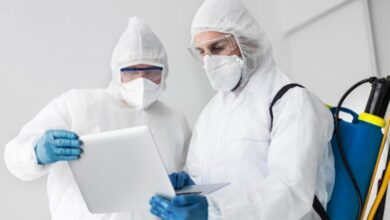Human Brain – Function and Facts

The nerve system’s command centre is considered as the human brain, as it is the most challenging aspect of your body to grasp. It has the ability to send and receive large volumes of data. Our five senses – sight, smell, touch, taste, and hearing – all provide information to the brain at the same time.
The cerebrum, cerebellum, and brainstem are the three primary regions of the brain. The cerebrum, which comprises the right and left hemispheres, is the brain’s largest region. Voluntary movement, intelligence, and memory are all cerebrum functions. In this article, we will discuss the role and other facts of the brain.
Also check: xresolve
Table of Contents
Parts of the Brain and its Functions
Forebrain
The forebrain is the most significant portion of the brain. It is the frontal lobe of the brain.
The parts of the forebrain are as follows:
- Cerebrum
- Hypothalamus
- Thalamus
The function of the Forebrain: Reproductive activities, body temperature, emotions, appetite, and sleep are all controlled in the forebrain. The cerebrum is the largest of the forebrain components. It also takes up the most space in all vertebrate brains.
Cerebrum
The cerebrum is the brain’s most considerable portion. The cerebrum holds the brain’s primary lobes and is in charge of collecting and interpreting information from the sense organs, as well as managing the body. It is made up of two cerebral hemispheres connected by the corpus callosum, which is a thick, dense band of fibre.
Hypothalamus
The hypothalamus is a small but significant region of the brain that sits just under the thalamus. It is regarded as the brain’s central region because it is engaged in the following functions:
- Impulses are received.
- Body temperature is regulated.
- Controls one’s emotions and mood.
- Taste and smell are both controlled by this organ.
- The body’s vital hormones are synthesised.
- Coordinates the autonomous nervous system’s communications.
Thalamus
The thalamus is a tiny region in the brain that sits between the cerebral cortex and the midbrain, slightly above the brain stem, and has extensive nerve connections to both. The function of the thalamus is to transmit motor and sensory information to the cerebral cortex, and it also controls sleep, wakefulness, and attentiveness.
Mid-brain
The midbrain comprises:
- Tectum
- Tegmentum
Tectum
The tectum, or dorsal region of the midbrain, is a small portion of the brain. It acts as a hub for sensory information to be relayed from the ears to the cerebrum. It also regulates the head, eye, and neck muscles’ reflex motions. It serves as a conduit for the various neurons that move in and out of the cerebrum.
Tegmentum
The tegmentum is a part of the brainstem. It is a multi-component system primarily engaged in body motions, sleep, arousal, attention, and numerous required reflexes. It connects the thalamus, cerebral cortex, and spinal cord and serves as a platform for the midbrain.
Hind-Brain
The hindbrain consists of:
- Cerebellum
- Medulla
- Pons
Hindbrain functions: The hindbrain’s three sections coordinate all of the processes required for survival, such as breathing, sleep, heartbeat etc.
Cerebellum
The cerebellum, located in the posterior section of the medulla and pons, is the second-biggest part of the brain. The cerebellar tentorium and transverse fissure separate the cerebellum and cerebrum. The folia are parallel ridges that run parallel to the cortex on the cerebellum’s outer surface.
Medulla
The medulla oblongata is a tiny structure located in the brain’s lowest area. It primarily regulates autonomic functions in the body, such as heartbeat, breathing, and digestion. It is responsible for bridging the gap between the spinal cord, pons, and cerebral cortex. It also aids in the maintenance of our posture and the management of our reflexes.
Pons
The medulla oblongata is a tiny structure located in the brain’s lowest area. It primarily regulates autonomic functions in the body, such as heartbeat, breathing, and digestion. It is responsible for bridging the gap between the spinal cord, pons, and cerebral cortex. It also aids in the maintenance of our posture and the management of our reflexes.
Brain facts
- Three pounds is the average weight of an adult brain
- Water makes up about 75 per cent of the brain, which means that even modest quantities of dehydration might harm brain processes.
- The sperm whale has the most incredible brain of any mammal. It is roughly 20 pounds in weight.
- In the first year of life, the human brain grows three times its original size. It keeps growing until you’re around 18 years old.
- A chemical response in your brain, combined with the muscles and nerves of your neck and head, causes headaches.
- A human brain is made up of around 100 billion neurons.
Hypersaline solution
In head-injured children and adults, hypertonic saline (HS) treatments are increasingly utilised to reduce increased intracranial pressure. In experimental and clinical trials, advantages over other hypertonic solutions such as mannitol were proven in intracranial pressure reduction, improvement of cerebral perfusion pressure, and cerebral oxygenation.
Summary
In this article, we came across many terms related to the human brain. The brain is a complex organ that coordinates every action in our body, including thought, memory, emotion, touch, motor skills, vision, respiration, temperature, and hunger. The central nervous system, or CNS, comprises the brain and the spinal cord that extends from it.
Also Check: ideal magazine



